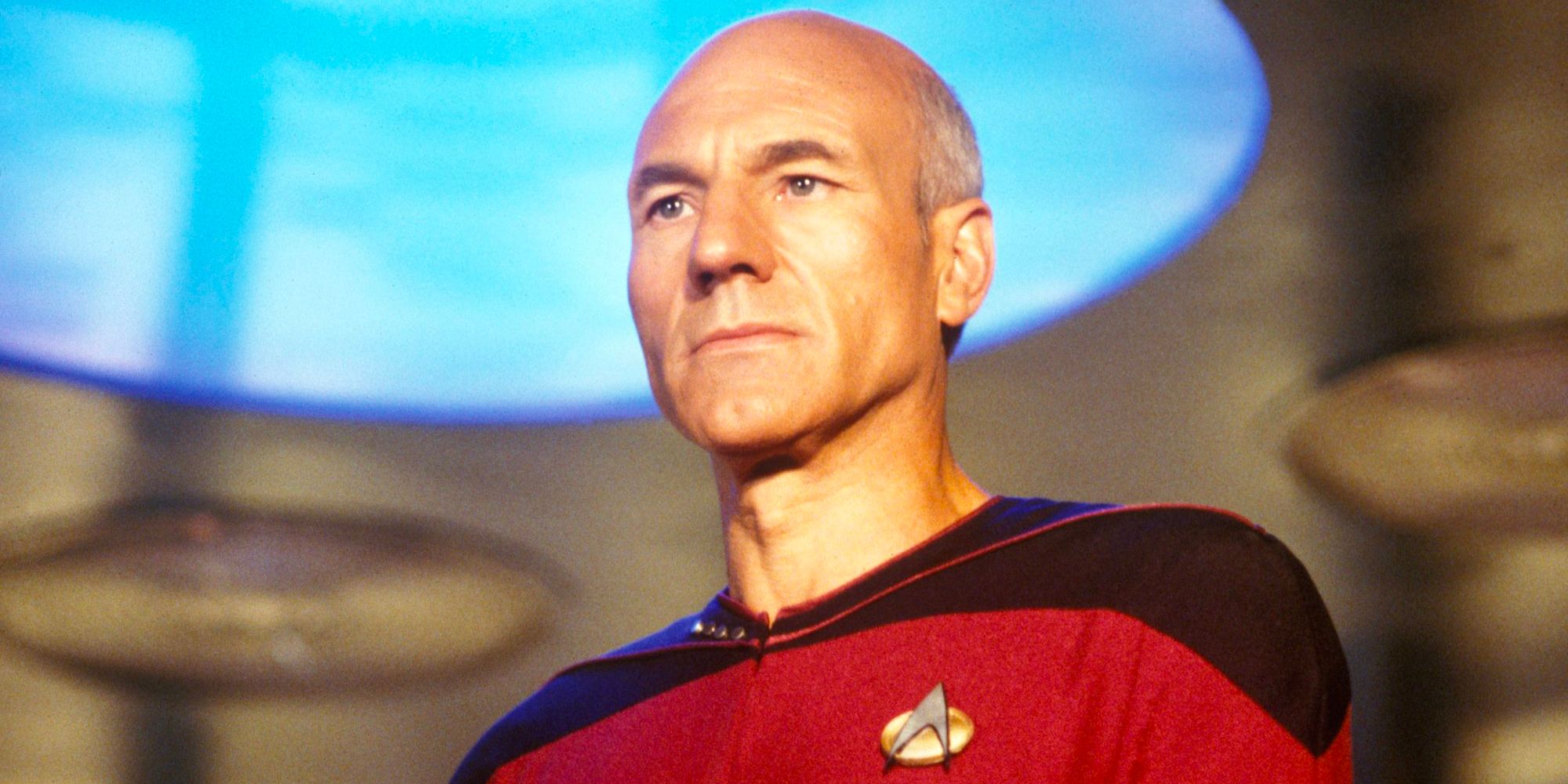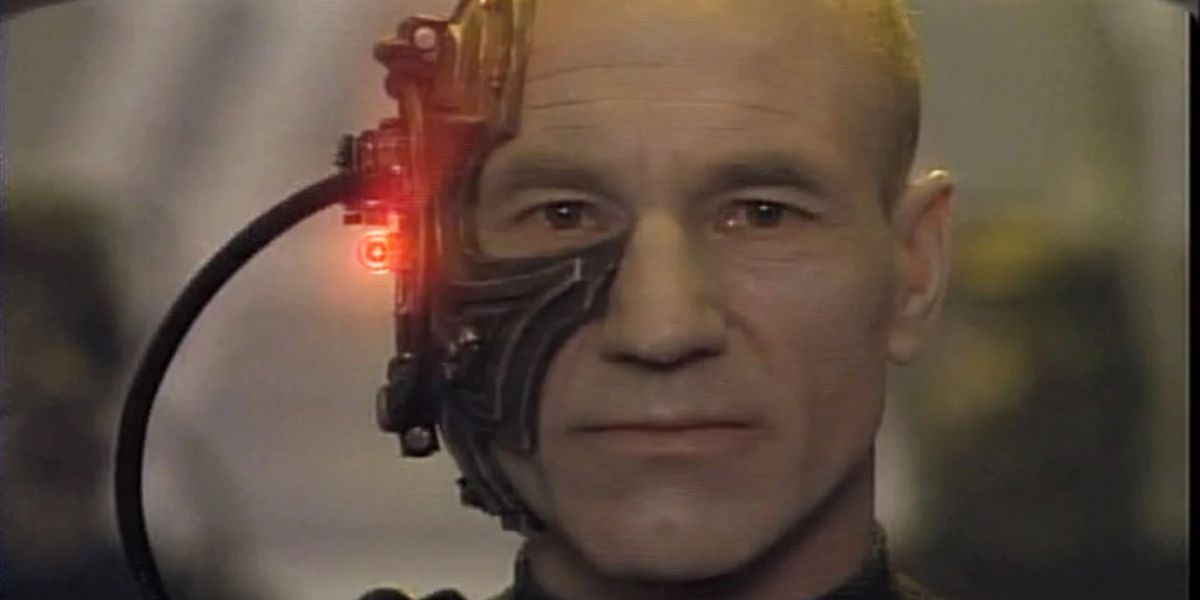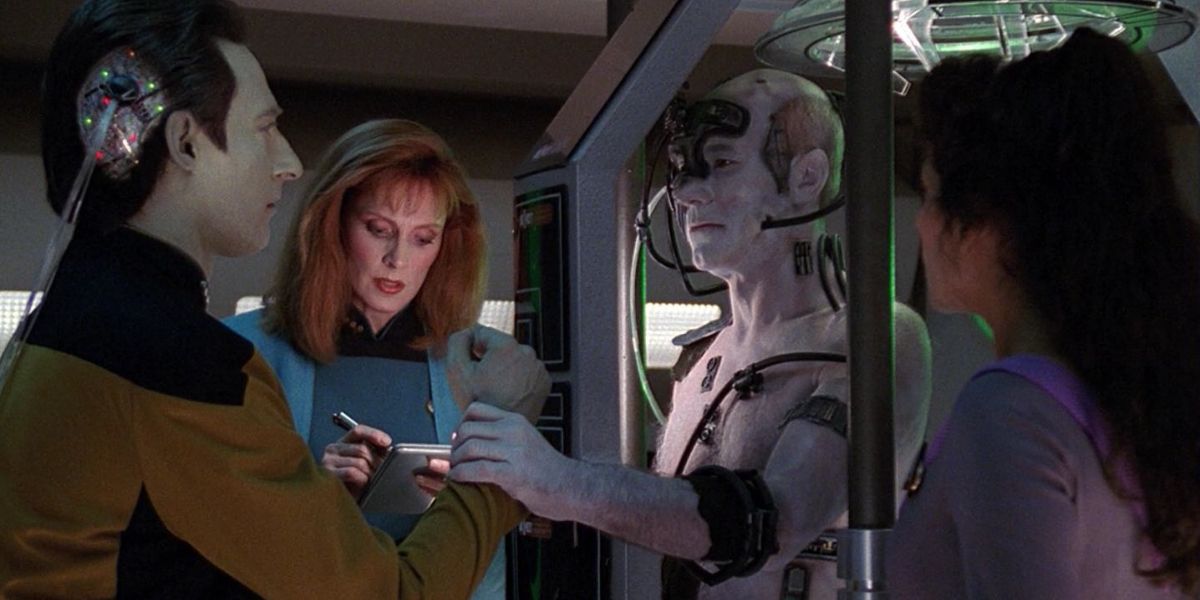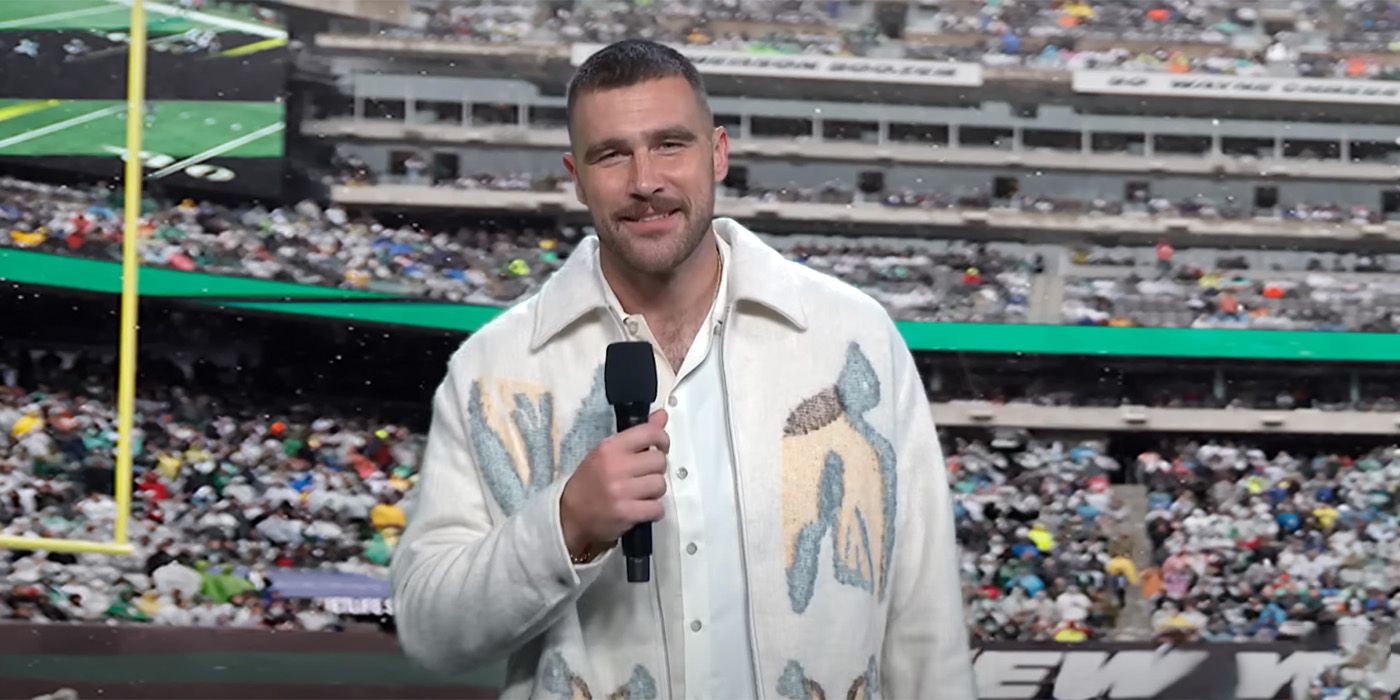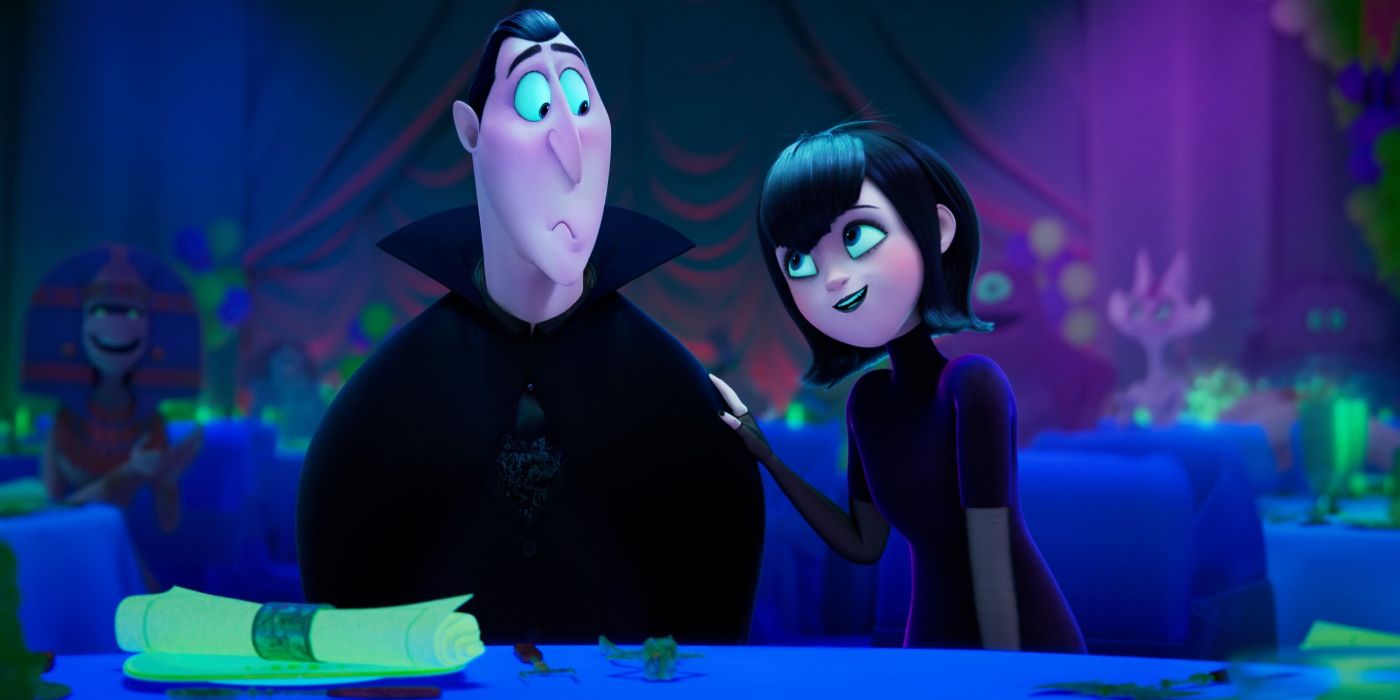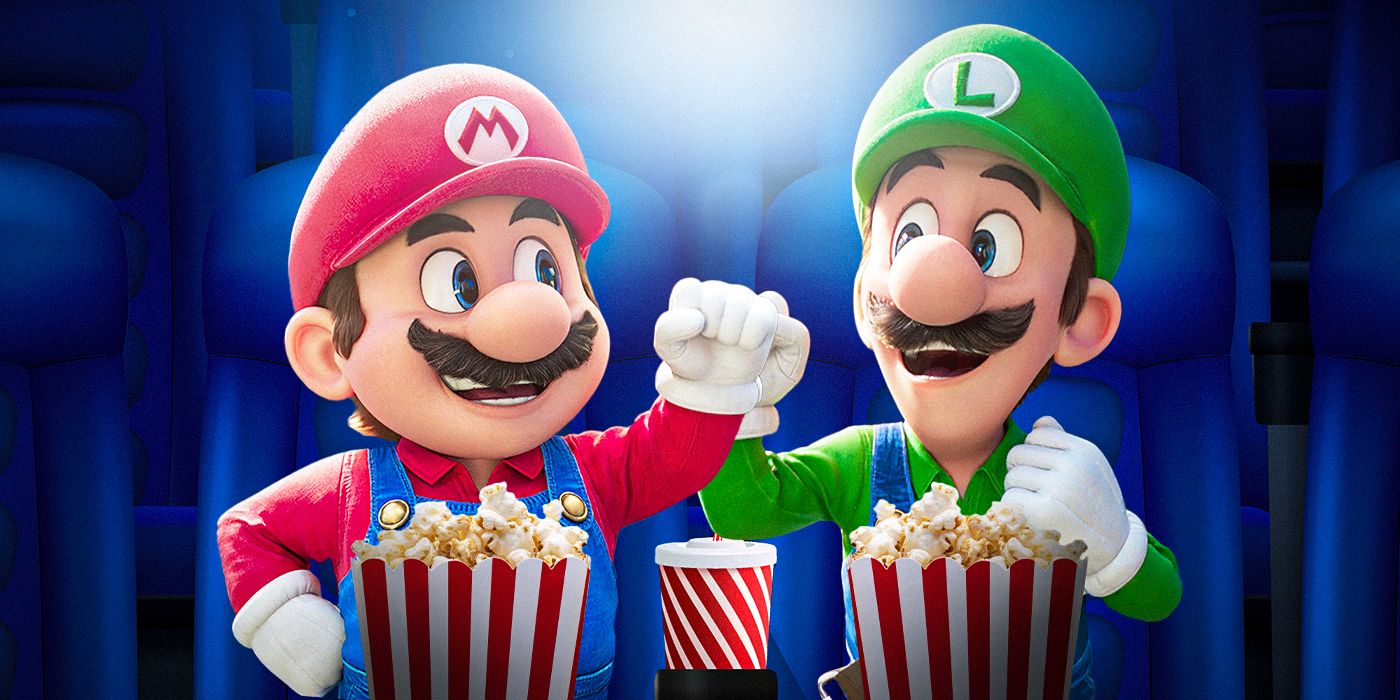The Big Picture
- Serialized storytelling became dominant in TV thanks to shows like Hill Street Blues, which normalized season-long arcs and character development.
- Star Trek: The Next Generation broke TV rules with its two-part Season 3 finale and Season 4 premiere, which introduced the first true cliffhanger and a mind-blowing twist involving the Borg.
- The episodes “The Best of Both Worlds” and “Family” showcased the evolution of TV storytelling by prioritizing character development and exploring emotional fallout, setting a new standard for dramatic tension and flawed, evolving characters.
A long, long time ago, one-off episodes were the law of the land. Series were episodic in nature regardless of genre. Sometimes, characterization moments carried over and returning characters popped in and out for flavor’s sake, but serialized narratives and character arcs didn’t creep into play until 1980s game-changers like Hill Street Blues. The drama from creators Steven Bochco and Michael Kozoll was a powerhouse risk-taker and an instrumental force credited for normalizing season-long arcs. Slowly but surely, serialized stories became dominant enough that episodic shows are now a rarity.
Star Trek: The Next Generation, the floundering sequel to the 1960s original, underwent a similar evolution. The Next Generation already had a lot to prove when it hit the airwaves in 1987. The glories of syndication had turned Star Trek: The Original Series into a cult classic, but the space-faring title was still far from global phenomenon status. Would the follow-up to a canceled series have enough bite to kickstart a franchise? Eight more shows, thirteen films, and a thriving fandom later, the answer’s a resounding yes — but not before The Next Generation broke all the established TV rules in the summer of 1990. A gut punch as staggeringly effective as its impact on the franchise’s modus operandi is lasting, The Next Generation‘s two-part Season 3 finale and Season 4 premiere sliced up audience expectations with the finesse of a butcher’s meat cleaver and drop-kicked the television landscape into a new universe — dare we say, to “where no one has gone before.”
‘Star Trek: The Next Generation’s “The Best of Both Worlds” Prioritized Character and Story Arcs
Despite strong ratings, The Next Generation‘s early seasons saw conflict between creator Gene Roddenberry and the cast and crew over dialogue, costumes, and thematic content. Not only did The Next Generation follow the Star Trek formula of one-and-done episodes, but Roddenberry was insistent humanity had evolved past interpersonal flaws. It’s a nice thought, but utopian ideals make for dull, repetitive stories. After all, conflict is the heart of all drama. The more Roddenberry stepped away from The Next Generation, the more freedom the screenwriters had to develop the Enterprise crew into dynamic, humane characters instead of stock figures fulfilling the plot-of-the-week’s requirements. Those attempts catalyzed when Season 3 senior writer Michael Piller invoked a new scripting Prime Directive: every Season 3 episode had to prioritize character development.
Appropriately, the Season 3 finale and Season 4 premiere “The Best of Both Worlds Part One and Two” exist in applauded infamy as Star Trek’s first true cliffhanger. You see, Season 2 had planted a dangling plot seed when the capricious entity Q (the perpetually delightful John de Lancie) flung the Enterprise into uncharted space in a fit of pique — straight into the path of entities called the Borg. These hominids’ sole purpose was to “assimilate” all in their path, stripping species of individuality, memories, and free will. The Enterprise quickly realized they were hopelessly outmatched by the Borg’s technological superiority. Restored to a safe quadrant of space by episode’s end, the crew’s left with a sense of looming dread. It was only a matter of time before the Borg declared war on humanity in ways Romulans, Cardassians, and Klingons could only dream of mimicking.
“The Best of Both Worlds Part One” wastes no time leaping head-first into “aw, crap” town. Every aspect feels starkly ominous, from the cold open where the crew confirms a populous Federation colony was annihilated by the Borg to a Starfleet strategy meeting detailing just how underprepared the galaxy is against this new enemy. Combined with an unsettling score and some understated performances, the expertly crafted tension lends the situation credence.
Smartly, Michael Piller’s script interweaves naturalistic character beats between plot advancements and set pieces. In one corner, the normally unflappable main characters are tossed into introspection and self-doubt. In the other, the Enterprise crew enjoys their weekly poker nights. The tonal shifts between growing unease, predatory self-reflection, and breezy joke-swapping are smooth as butter and as complimentary as butter on fresh toast. Fans don’t need exposition to know how close this group’s grown as a triad of crew, people, and friends. The emotional stakes matter as much as the “threat against all humanity” stakes.
‘Star Trek: The Next Generation’s Biggest Cliffhanger Was Unprecedented
Captain Jean-Luc Picard (Patrick Stewart), the man of the hour (the decade, the century, the millennia), said psychological stakes are stratosphere-high. Against such a monolithic threat as the Borg, an enemy that can’t be intellectually reasoned with, Picard’s out of his element. And it shows, the strain oscillating through Stewart’s restless physicality. In a quietly potent scene, he and his long-time confidant Guinan (Whoopi Goldberg) discuss the tradition of a captain touring his ship before a hopeless battle. Picard has no qualms about sacrificing his life as long as civilization stays protected. There’s hardly a better way to underscore just how stinking good of a man Picard is than through his selfless, courageous resolve. When it comes to morals, Picard is the most indefatigable Starfleet officer one could ask for.
Moments later, two Borg appear on the Enterprise bridge and kidnap Picard. Excuse me? Abducting the hero was just not done, y’all; not in Star Trek, and certainly not in normal episodic television. Everything that follows is a nightmare building toward the moment Beverly Crusher (Gates McFadden), part of a rescue team infiltrating the Borg cube, recognizes Picard through the haze of phaser fire. The lumbering figure she sees, however, is no longer Jean-Luc Picard. Attired in black Borg regalia with multiple limbs and one eye swapped out with mechanical parts, the Borg have brainwashed him into acting as their voice and their greatest weapon against the Federation.
Previous alien villains were still human-esque and therefore surmountable. Even Star Trek deaths were a cultural meme (hi, red shirts). In 1990, something capable of corrupting a cultured, impassioned captain into a mindless husk was unimaginable. When Borg!Picard promises the Federation’s doom, all the Enterprise crew can do is listen. The atmosphere breathes and builds, ensuring the situation’s horror is inescapable and that the crew’s individual – yet, ironically, collective – grief palpable. The floor’s been wrenched out from under their feet as much as the viewers’.
Just as unheard of is the franchise’s first cliffhanger, accompanied by a “To Be Continued…” screen and a “dun-dun-dun” score worthy of John Williams gravitas. In a lovely anecdote from Patrick Stewart (via his costar Jonathan Frakes), the actor shared how fans shouted at him, “[You] ruined our summer!” The world spent a long, torturous three months waiting to see if Picard was dead and gone. That kind of cultural anticipation pre-dated Game of Thrones and was something no money could buy.
‘Star Trek: The Next Generation’ Broke the Television Mold for the Better
If “Part Two” lacks its predecessor’s impact, well, that was a tough act to follow. The Enterprise crew rescues Picard with gritty flair; teamwork outsmarts a Borg hive mind that’s unable to think beyond its compulsion to conquer. One then expects an all’s well that ends well in proper TV tradition. Yet between the mournful music cues and Stewart’s soulful silences, it’s obvious Picard remains haunted. Those dangling emotional threads immediately culminate in the next episode, “Family,” penned by future Battlestar Galactica and Outlander showrunner Ronald D. Moore. As Picard prepares to visit his family home, he assures Deanna Troi (Marina Sirtis) that “The injuries are healing.” She responds, “Those you can see in the mirror.”
Picard’s estranged brother Robert (Jeremy Kemp) also doesn’t buy Picard’s cautious avoidance. Old fraternal tensions rise until the two duke it out, and Picard, covered in mud, once again does something revolutionary for the untouchably dignified captain: he weeps, agonized and ugly. Not only does he feel violated, he blames himself for the innocent lives lost to the Borg. “Family” is a character study allowing Picard to be a terrified, flawed, and furious mess who grapples with his trauma in viscerally basic human ways. Scars aren’t resolved in sixty minutes. Picard’s experiences will shape his life, but rather than try to escape those ramifications into happy ending TV land, he must learn to live with them. (Ironically enough, Gene Roddenberry strongly objected to “Family.”)
Dramatic events in The Original Series rarely saw emotional fallout. Even the best characters remained static. That isn’t inherently faulty given the era, but television’s gradual shift toward long-form storytelling demanded more from The Next Generation. The character-based risk that was “The Best of Both Worlds” and “Family” paid off in dividends. Sure, the series remained largely episodic outside of two-parters and season finales. Yet The Next Generation overcame its creative impasse enough to run for four more seasons, secure the franchise’s future, and set the bar exponentially high with regard to dramatic tension and flawed, ever-evolving characters. The rules were shattered, the boundaries pushed.
In The Next Generation‘s wake, up cropped serialized shows as prestigious as The West Wing. By the 2000s, The Sopranos, The Wire, and Breaking Bad confirmed the new norm. At the same time serialized television stretched out its first feelers, this little sci-fi show that could left a mark equal to influential prestige dramas like Hill Street Blues. The sheer daring of “The Best of Both Worlds” and “Family” truly explored strange new worlds: the kinds of stories television could tell and the groundbreaking way it could tell them.

